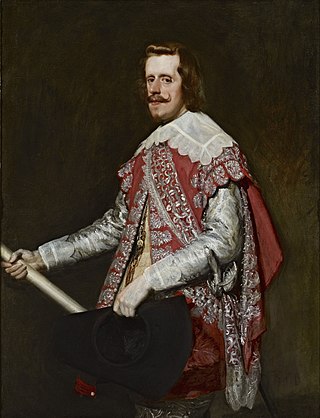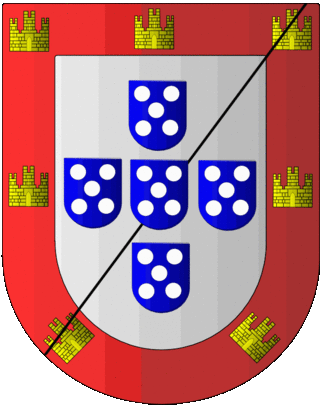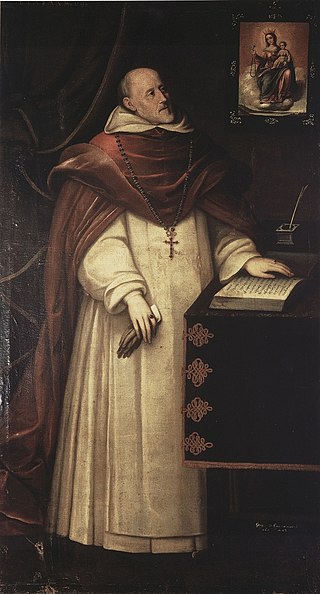| |||||
| Decades: | |||||
|---|---|---|---|---|---|
| See also: | Other events of 1636 List of years in Spain | ||||
This article needs additional citations for verification .(February 2024) |
Events from the year 1636 in Spain
| |||||
| Decades: | |||||
|---|---|---|---|---|---|
| See also: | Other events of 1636 List of years in Spain | ||||
This article needs additional citations for verification .(February 2024) |
Events from the year 1636 in Spain
| | This section needs expansion. You can help by adding to it. (October 2015) |
| | This section needs expansion. You can help by adding to it. (October 2015) |
| | This section needs expansion. You can help by adding to it. (October 2015) |

Victor Amadeus I was the Duke of Savoy and ruler of the Savoyard states from 26 July 1630 until his death in 1637. He was also known as the Lion of Susa.

Philip IV, also called the Planet King, was King of Spain from 1621 to his death and King of Portugal from 1621 to 1640. Philip is remembered for his patronage of the arts, including such artists as Diego Velázquez, and his rule over Spain during the Thirty Years' War.

Balthasar Charles, Prince of Asturias, Prince of Girona, Duke of Montblanc, Count of Cervera, and Lord of Balaguer, Prince of Viana was heir apparent to all the kingdoms, states and dominions of the Spanish monarchy from his birth until his death.

Elisabeth of France, also known as Isabel or Elisabeth of Bourbon was Queen of Spain from 1621 to her death and Queen of Portugal from 1621 to 1640, as the first spouse of King Philip IV & III. She served as regent of Spain during the Catalan Revolt in 1640–42 and 1643–44. As the mother of the Queen of France Maria Theresa, wife of Louis XIV, she's the great-grandmother of the Duke of Anjou, who became king of Spain as Philip V. Through her daughter, Elisabeth is the progenitor of the Spanish branch of the House of Bourbon, which still rules over Spain to this day, as all future kings of Spain after the War of Spanish Succession descend from her. She's also the ancestor of the current Grand Duke of Luxembourg, Henri, through both the Bourbon-Parma collateral branch of the Spanish royal family and the main branch of Bourbon dynasty, as he is a descendant of the last Duke of Parma, Robert I, and his mother Louise of Artois, the granddaughter of Charles X of France, through Robert's son Felix.

Margaret of Savoy was the last Habsburg Vicereine of Portugal from 1634 to 1640. In Portuguese she is known as Duquesa de Mântua, being by marriage the Duchess of Mantua and Montferrat. She was also regent of Montferrat during the minority of her daughter from 1612.
Maria of Portugal is the name of several Portuguese queens, queens consort, princesses and infantas, some of whom reigned as Queen of Spain or other lands:

Dom Francisco de Melo was a Portuguese nobleman who served as a Spanish general during the Thirty Years' War.

Christine Marie of France was Duchess of Savoy from 26 July 1630 to 7 October 1637 as the consort of Duke Victor Amadeus I. She was the daughter of Henry IV of France and sister of Louis XIII. Following her husband's death in 1637, she acted as regent of Savoy between 1637 and 1648.

DomRaimundo of Lencastre was the older son of George of Lencastre, 1st Duke of Torres Novas, and grandson of Álvaro and Juliana of Lencastre, 3rd Dukes of Aveiro.

The Palacio de Santa Cruz or Palace of the Holy Cross is a baroque building in central Madrid, Spain. It now houses the Spanish Foreign Ministry. It was used as a jail until the reign of Philip IV of Spain, when it was converted into a palace.
Juan Manuel Pérez de Guzmán y Silva was a Spanish noble and 8th Duke of Medina Sidonia.

The Judgement of Paris refers to any of the several paintings of the Judgement of Paris produced by Peter Paul Rubens, though he did not match the 22 depictions of the subject attributed to Lucas Cranach the Elder. There were versions before about 1606, then he returned to the subject thirty years later; all take the opportunity to show nude females from different angles.

The Torre de la Parada is a former hunting lodge that was located in present-day Monte de El Pardo in Fuencarral-El Pardo, near the Royal Palace of El Pardo, some way outside Madrid in the Sierra de Guadarrama. It was mostly destroyed by fire when taken in 1714 by Austrian troops in the War of Spanish Succession, though the ruins remain.

The Portrait of Philip IV in Fraga is a mid-length portrait of Philip IV of Spain by Velázquez. It was painted over the course of three sessions in June 1644 in Fraga, where Philip IV had moved the royal court as part of the "Jornada de Aragón" which resulted in the recovery of Lérida from France, which had occupied the city earlier during the Reapers' War. The portrait was gifted by Philip V to his son, the future Philip, Duke of Parma, and the painting left Spain along with him in 1748. In 1911 it was acquired by the Frick Collection, where it is currently on display.

The Birth of the Milky Way, also sometimes known as The Origin of the Milky Way, is an oil-on-canvas painting by the Flemish artist Peter Paul Rubens, produced between 1636 and 1638 and featuring the Greco-Roman myth of the origin of the Milky Way. The painting depicts Hera (Juno), spilling her breast milk, the infant Heracles (Hercules) and Zeus (Jupiter) in the background, identifiable by his eagle and lightning bolts. Hera's face is modelled on Rubens' wife, Hélène Fourment. The carriage is pulled by peacocks, a bird which the ancient Greeks and Romans considered sacred to both themselves and to Hera/Juno, as a result of their ability to signal changes in weather through cries and hence their perceived connection to the gods.

The Rape of Ganymede is a painting by the Flemish Baroque painter Peter Paul Rubens produced between 1636 and 1638 painting for the Spanish king Philip IV of Spain's hunting lodge. The painting is based on a story recounted in classical poet Ovid's Metamorphoses. It depicts the moment when the Roman supreme god Jupiter disguised as an eagle catches the young shepherd Ganymede and lifts him into the air. It is in the collection of the Museo del Prado in Madrid. The dramatic scene gave Rubens ample opportunity to show his skill in depicting a lively scene and the nude.

Saturn or Saturn Devouring His Son is a 1636 painting by the Flemish artist Peter Paul Rubens, now in the Museo del Prado, in Madrid.
Luis Jiménez (1586–1636) was a Roman Catholic prelate who served as Bishop of Ugento (1627–1636).

Peeter Symons or Peeter Simons was a Flemish painter only known for his collaboration with Rubens in 1636 on the commission from the Spanish king Philip IV of Spain to create a series of mythological paintings to decorate the Torre de la Parada, a hunting lodge of the king near Madrid.

Cristóbal de Torres y Motones, OP was a Spanish-born prelate of the Catholic Church in New Spain. A member of the Dominican Order, in 1635 he was appointed archbishop of the Archdiocese of Santafé en Nueva Granada. There, he was one of the first bishops in New Spain to admit indigenous people to communion, and he later founded Del Rosario University in Bogotá.
![]() Media related to 1636 in Spain at Wikimedia Commons
Media related to 1636 in Spain at Wikimedia Commons